Kitchen Project #108: To preserve or not to preserve
That is the question. Summer fruit edition!
Hello,
Welcome to today’s edition of Kitchen Projects, my recipe development journal. Thank you so much for being here!
For today’s edition, I’m thrilled to hand you over to the brilliant Camilla Wynne, our resident preserving expert (and author of two preserving books, Jam Bake and Preservation Society Home Preserves). Here, in the height of summer, Camilla will talk us through the highs (and lows) of preserving, running us through all of this season’s fruit. Think of it as a ‘Yay’ or ‘Nay’ guide to summer fruits preserving, letting us know where we should focus our energy (and which fruits we should just eat greedily as fresh as possible).
Over on KP+, Camilla is sharing a wondrous recipe that’ll solve for any summer fruit glut; The fabulously named Tutti Frutti Jam. Click here for the recipe.
What’s KP+? Well, it’s the level up version of this newsletter. By joining KP+, you will support the writing and research that goes into the newsletter and join an amazing, growing community, access extra content (inc. the full archive) and more. Subscribing is easy and only costs £5 per month. Why not give it a go? Come n join the gang!
Love,
Nicola
Before embarking on this newsletter, if you need a fresher on all the types of preserves (e.g. jelly vs jam, chutney vs compote) I’d suggest reading Camilla’s brilliant overview first:
To preserve or not to preserve… that is the question
Ah, summer.
While supposedly relaxing, the preserver can instead find it panic-inducing as they scramble to transform all their favourite fruits. The first tender pink stalks of rhubarb are met with utter elation, as are the first strawberries, but as the onslaught of berries begins and then overlaps with stone fruit and melons, things can start to get a bit hairy. Personally, I can’t go to the farmer’s market at this time of year without freaking out a bit, impulsively buying fruit I have no idea what I’ll do with or, more importantly, when I’ll do it. I just need to either eat or bake with as much of it as I can while it’s in season, or else preserve it to tide me over until next year.
I’m one of those annoying people who as a general rule doesn’t eat fruit that grows near me out of season—I’d rather not have it at all than eat a pale facsimile flown in from very far away. Thus, time is of the essence. However, not all fruit is created equal! While some seem to exist almost solely for jam-making, others are better for baking or chutney, and some I enjoy only fresh during their short season—I have made my peace with this. So, if you’d like to preserve some of this summer’s bounty, read on for the best ways to prolong your enjoyment of what you’ve hauled home from the market.
Strawberries
Ironically, strawberry jam is one of the most difficult jams to perfect, yet it’s the first sort most new preservers try their hand at! How discouraging. On account of their low pectin, it can be quite difficult to get a nice gel on strawberry jam, especially when using the tired berries one often sees sold as “jam berries” at market. While I wouldn’t suggest starting off your jam journey with strawberries, a seasoned preserver will succeed with a few tips. First, use 75% perfectly ripe berries and 25% slightly underripe—this rule applies to any fruit that’s not high pectin because natural pectin levels decrease with ripeness. I also buy my strawberries at the farmer’s market for maximum freshness and avoid buying them when it’s been raining, as this can make them waterlogged. Finally, adding a little citric acid also brightens up the flavour of strawberry jam, giving back some of that fresh fruit acidity that gets lost in cooking, particularly with sweet fruits.
I store unwashed strawberries on a cookie sheet in a single layer between two tea towels in the refrigerator to prolong their lifespan. Any berries past their prime can either be dried for a chewy snack or granola addition; frozen for adding to smoothies; or made into a syrup perfect for sweetening lemonade or adding to spritzers;Just combine hulled berries with 10% of their weight in sugar in a heatproof bowl and cover tightly with plastic wrap. Set over a pot of barely simmering water until they have given off plenty of liquid and look pale and spent before straining. Even these exhausted berries can still be made into a pretty decent fruit leather!
Raspberries & Blackberries
Raspberry is probably the second most popular jam after strawberry, though I think they’re better suited to the medium. Blessed with moderate pectin and acidity, they make a vibrantly coloured jam dotted with seeds (though you can always strain some out if you prefer). Blackberries are just the same, though a little fleshier, resulting in a chunkier jam if not emphatically mashed.
They both also make excellent flavoured vinegar when steeped over a few months—which when sweetened becomes a delicious shrub. To make it, place berries in a sterilized jar, cover with white wine vinegar (a 1:1 ratio of berries to vinegar by weight), cover and let sit 3 to 4 weeks before straining .
Similarly, they make very fine syrup when simmered with water and a little sugar, then strained. These can then be used as the syrup in which to preserve peaches, which is a very excellent thing to do. Although, raspberries are very fine in their own right preserved in syrup—this was one of my most favourite desserts as a child (over ice cream, natch). Blackberries, on the other hand, lend themselves better to compote, which is excellent to have on hand all winter long for a quick yet magical addition to breakfast (yogurt or pancakes) or dessert (pound cake or ice cream).
Blueberries
While I know many won’t relate, the truth is that I don’t particularly care about blueberries– so much so that I left them out of this article entirely until Nicola pointed out my omission. I simply prefer a more tart and aromatic berry! That said, I do find them pleasant in baked goods. As far as preserving goes, because they lack acid when I do rarely use them, I combine them with something sour or bitter. For years I only used them in jam paired with tart rhubarb (= bluebarb jam), until I had the idea to infuse whole coffee beans in blueberry jam, which adds a layer of intrigue without necessarily tasting of coffee. I like to use a combination of wild and cultivated blueberries, as the former have more flavor and the latter have more flesh than their seedier cousins.
If you are a blueberry fan, you might also want to put up a compote or syrup (perhaps sweetened with maple syrup or maple sugar?) to pair with your pancake and waffles.
Currants & Gooseberries
Currants and gooseberries are made for preserving. Their mouth-puckering acidity combined with laudable levels of pectin makes them a natural choice for mixing with sugar and cooking to the setting point. Although, I reserve black currants and gooseberries for enchanting, musky jam and red or white currants for jelly, as the latter are more seed than flesh, making for a rather gritty jam (unless you want to pick out all the seeds from each individual currant with a pointed goose quill, as in the famed Bar le Duc preserve). I used to spend ages topping and tailing my currants but now only remove the stems–the tails add texture that I like! With very large gooseberries I do tail them as well, however.
Homemade cassis, made by steeping currants in vodka and a little sugar is also a good idea. Or teetotalers might prefer making cordial. Even the leaves of the currant bush make an excellent cordial when steeped in syrup.
Cherries
While I dearly love sweet cherries, I opt to enjoy them fresh, preferably tumbled onto a platter of crushed ice on a hot summer’s day. A rare exception is adding them to a black currant jam, where they lend a meaty contrast to the seedy berries.
Sour cherries, on the other hand, are made for baking with and preserving. These tend to be smaller, acidic and more fragile than sweet cherries. While their sweet counterparts are easy to find in the summer, sour cherries tend to be sold at farmer's markets or specialty fruit stands. The one thing I must always do without fail is to cover a jar of them (stem on, pit in, by preference) with gently sweetened brandy. A month on the counter is all it takes, after which time they can be stored in the fridge indefinitely and used to enhance cocktails, cakes, sundaes and the like.
Sour cherries, though they can stand a good deal of sugar, are very low in pectin, so I prefer to make them into a compote to freeze or can, which I can whip out anytime I’ve made a cheesecake or want a fancy breakfast. Any extras can be pitted and dried.
Apricots
If black currant jam is #1 in my books, then apricot is a very, very, very close second. They’re only moderately endowed with pectin, so it’s best to use some slightly underripe fruit as with strawberries. And though you’ll find people arguing about it all over the internet, I think it’s a nice touch to crack open a few pits and add a few finely chopped, almond-scented kernels (which contain a very small amount of cyanide!). Apricots also pair particularly well with honey, chamomile (ideally fresh stuffed into a teaball, but bags work as well), vanilla and sour cherries.
While as I child I obsessed over the store-bought canned apricots in syrup in the cupboard (which I wasn’t allowed to eat unless we were completely out of fresh fruit), these days I tend to prefer making a compote, which has all the silky lushness of apricot jam, but is much easier to make (and less sweet!). I sweeten compote to taste but depending on the fruit it's probably 10-20% sugar per kilo of fruit compared to 50-66% for lower sugar jam.
Peaches & Nectarines
At least in North America, the most iconic preserved peaches are canned halves in syrup. It goes without saying that homemade are better—you choose the best peaches and make the syrup as sweet as desired, perhaps flavouring it with lemon verbena, vanilla bean or brandy. What you end up with are jars of pre-poached high summer peaches, ready to top ice cream or be nestled into a frangipane tart. Priceless! Nectarines are rarer to see treated this way, probably because they’re less easy to peel. White peaches, however, lack the acidity to be shelf stable in a vacuum-sealed jar without inviting the risk of botulism. Enjoy them fresh instead!
Jam is always a possibility but never my top choice, as peaches and nectarines lack pectin and run a little sweet for jam fruit in my opinion. It can be nice to combine them with more acidic, high pectin fruits to make up for this, such as raspberries or red or white currants.
Peaches and nectarines also make excellent chutney, their notes of honey standing up well to the strong flavours of vinegar and onions. The bright orange interspersed with pops of mustard seeds and plump raisins, flecked with spice, makes for a delicious and aesthetically pleasing jar.
Finally, drying peaches and nectarines is never remiss if you’ve got a lot to spare.
Plums
While I do enjoy a fresh plum, I really feel they were meant to be preserved, prunes being the obvious case in point. Their acidity, meaty flesh and moderate to high pectin levels mean they make excellent jam—on their own, warmly spiced, or paired with seedy fruit like raspberries or figs for a textural contrast.
There are loads of varieties of plums in all shades of purple and green with flesh ranging in colour from yellow to blood red or violet. Their sweetness varies as well, although almost all are tart enough to have great character when preserved. Damsons, Italian plums, Mont Royal and greengages are some of my favourites for preserving.
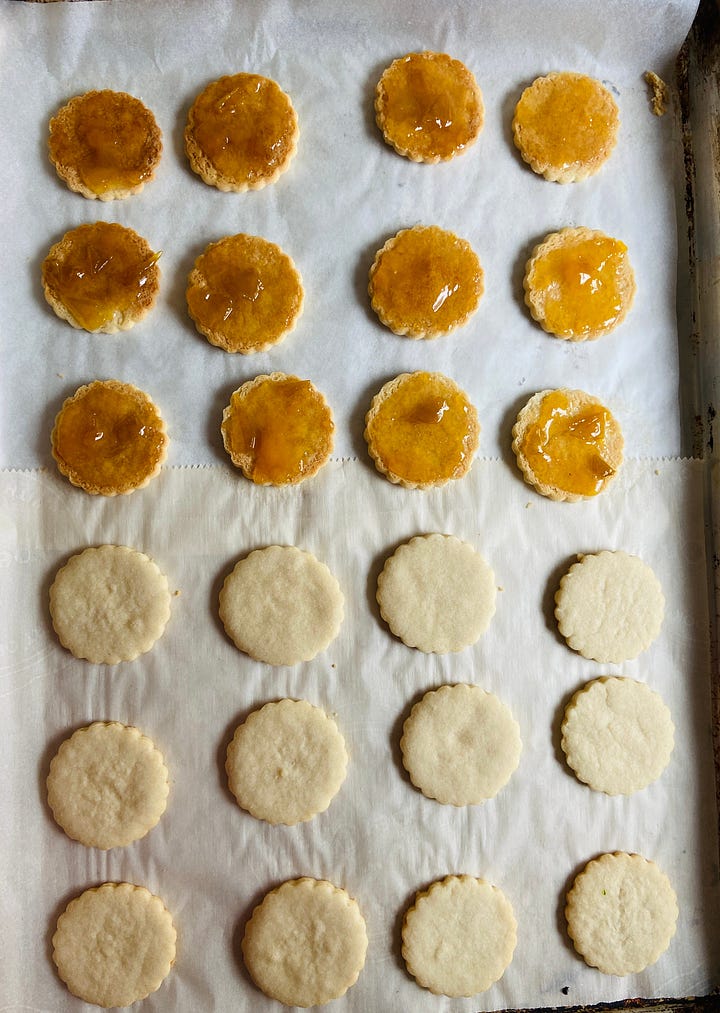
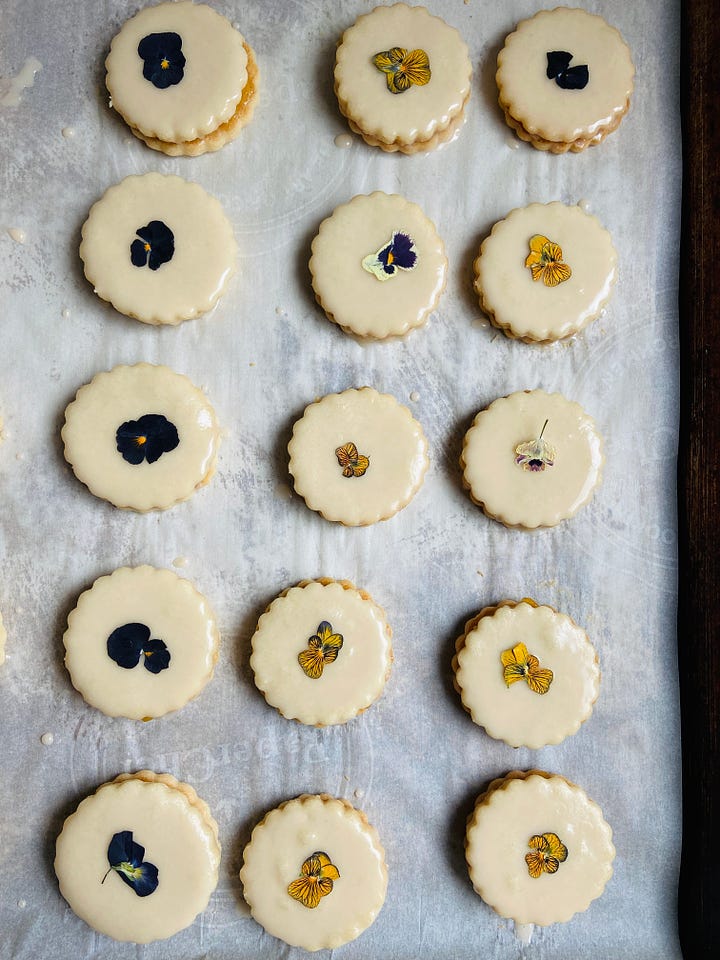
If you like to have compote on hand, plums make an excellent one, though they are perhaps even better suited to chutney. Their tartness is not overwhelmed but enhanced by vinegar as is their rich flavour complemented by onion and spice. Plum chutney with sharp cheddar is really one of life’s greatest pleasures.
If you can get your hands on very high pectin plums like damsons, fruit cheese is also a lovely option. Set in decorative moulds it makes a gorgeous centerpiece to a cheese board or a sweet gifts wrapped in parchment paper and tied with a bow. The gift of plums! Chef Anna Higham even makes vinegar out of the stones, clinging with flesh as they are, and then uses it to flavour fudge in her excellent book The Last Bite.
Figs
I could eat my weight in figs, but sadly I killed my two trees this year by siphoning off all the care I gave them to my new human baby who I hope does not begrudge me squandering her inheritance. Fortunately, figs can be bought and once I’ve gorged myself and baked a few tarts, jam is the best way to prolong their season. Unfortunately, figs are one of the few fruits that lack the acidity to be canned willy-nilly. Their pH is just a little too close for comfort to the 4.0 cut-off after which botulism can develop in a sealed jar. Now, no need to panic—a judicious amount of lemon juice will assure their safety, but it’s a good idea to err on the side of safety and use a tested professional recipe. They also pair nicely with other fruits who will lend acidity. Green figs go particularly well with strawberries, while I like purple figs with other purple fruits like plums and grapes.
Editors note: Being in a climate (UK) where figs do not ripen, I asked Camilla if she had any ideas for the hordes of unripe figs available in gardens here. Her response “I've never done anything with unripe figs but apparently in Italy they add them to pasta and frittatas, and in Greece they are preserved in syrup.” - Sounds like it’s worth experimenting!
Grapes
Grapes, particularly any variety that is aromatic and slightly tart, are fantastic for preserving. Obviously drying them makes raisins—a lot of trouble unless you have a windfall of grapes you need to deal with, though I do like to dry a small amount every year consecrated to fruitcake production a few months later. It feels very special to say you made your own raisins for fruitcake! That said, my favorite application is probably jam. Grape jelly is more common, at least in North America, but personally, I love the texture of jammy skins suspended in jellied pulp that is jam. True, it can be a royal pain to deal with a seedy batch of grapes—after washing and stemming, you need to squeeze each grape to separate the skin from the pulp.
The latter, once simmered with a splash of water, will relax in the heat and prise away from the pesky seeds, enabling you to strain them off. The pulp can then be reunited with the flavorful skins and made into jam. It’s a bit of work, but for that reason I only make a few much-cherished jars every year from the unknown dark purple varietal that grows in my friend’s yard. But if that all sounds like a chore to you, grape syrup is lovely as well! Make juice as for jelly and strain it off, forgetting the seeds and skins, then sweeten and bottle. A little citric acid is essential here to keep the flavor vibrant.
Melons (all varieties, including watermelon)
Possibly I’ll make a few enemies with this opinion, but I think, with a few exceptions, that melon is best enjoyed fresh. When perfectly ripe, heavy with sweet juice and exuding an intoxicatingly musky perfume, there is nothing better, whether wrapped in prosciutto and drizzled with olive oil or simply served chilled as dessert on a hot summer day.
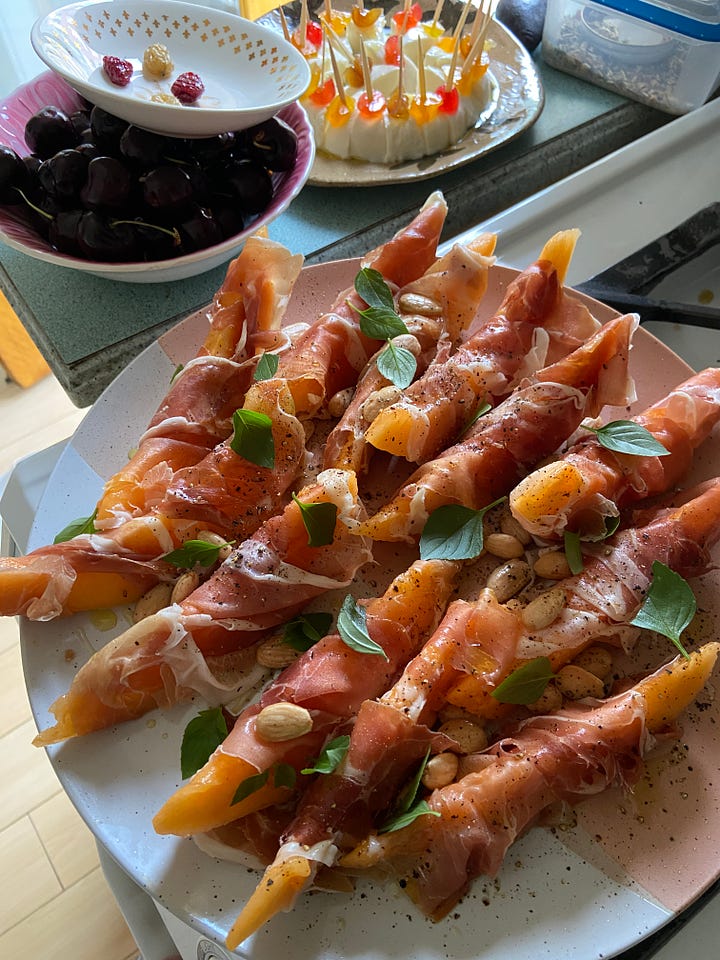
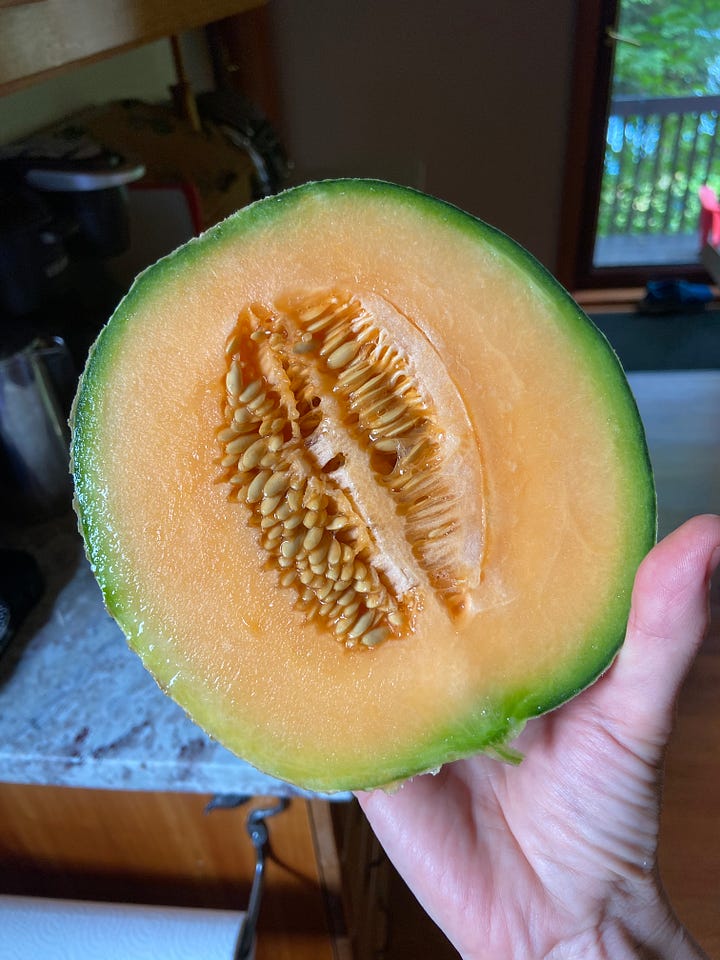
To my tastes, melon is simply too sweet, too high in water content and too low in pectin to bother trying to make into jam or to candy. I find melon jams invariably cloying, utterly lacking the charm of their fresh counterpart. That said, Nicola did manage to find one that I actually like, made by a French artisan who ingeniously combined melon with orange thus adding pectin and acid but managing to preserve the melon’s heady aroma.
There is one way I do like to occasionally preserve melon is by drying. Thinly sliced (peel on for contrast) and dried, it has a jerky-like texture and concentrated natural sweetness that makes a delicious snack and even an unexpected cake decoration.
For more of Camilla’s writing, check out her newsletter archive here. You can also follow her on Instagram to keep up to date with her classes, events and other projects or stay up to date by signing up to her newsletter. https://www.camillawynne.com/





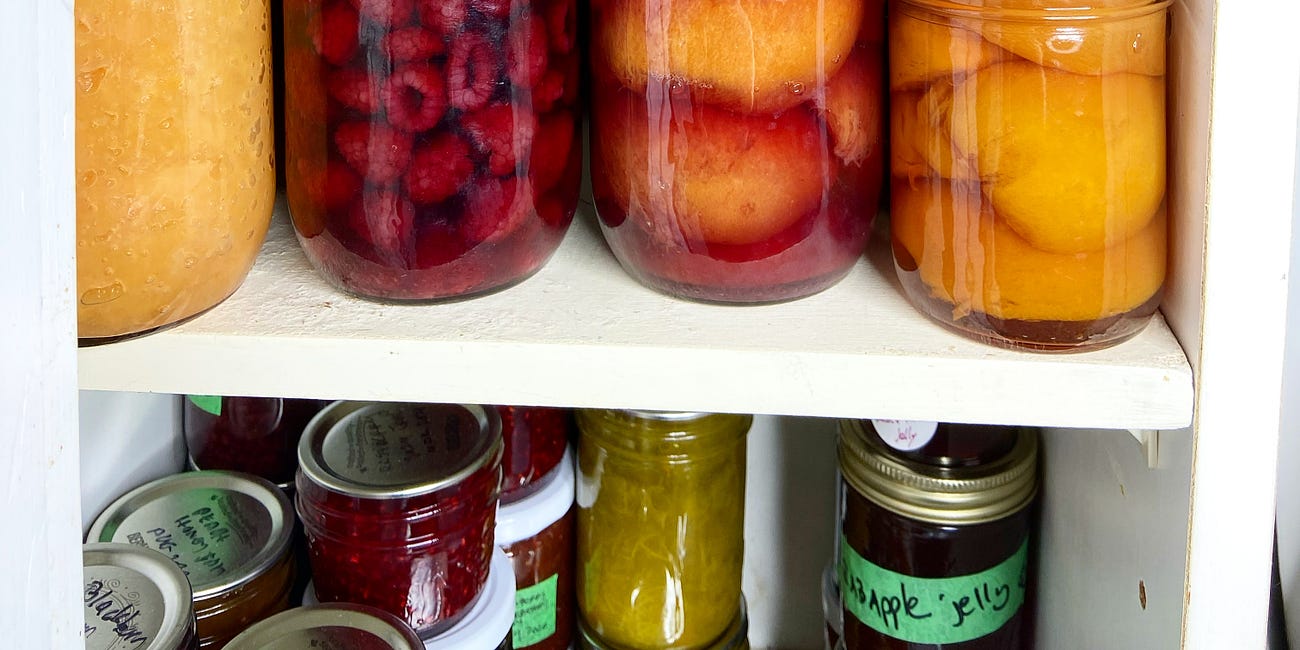
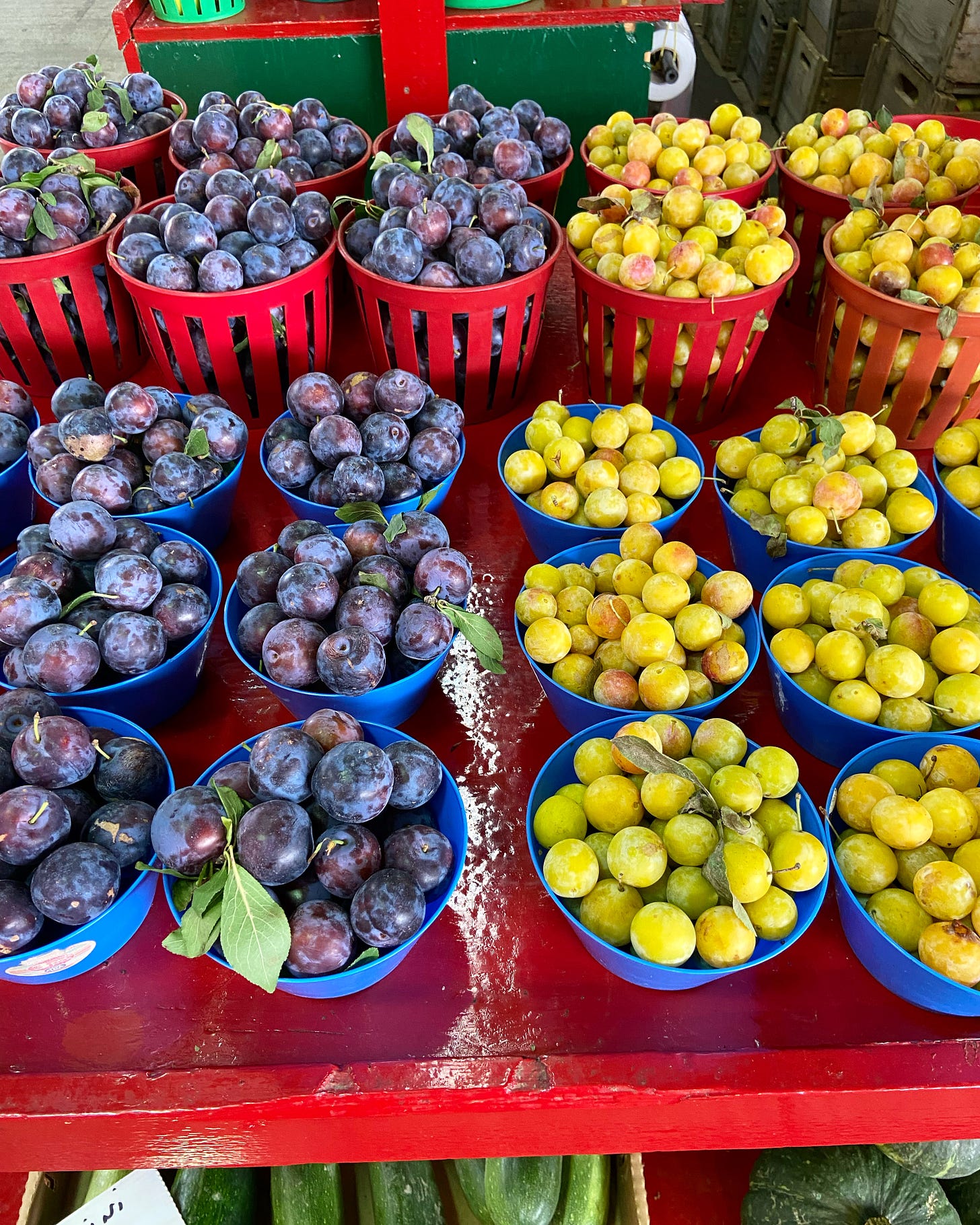
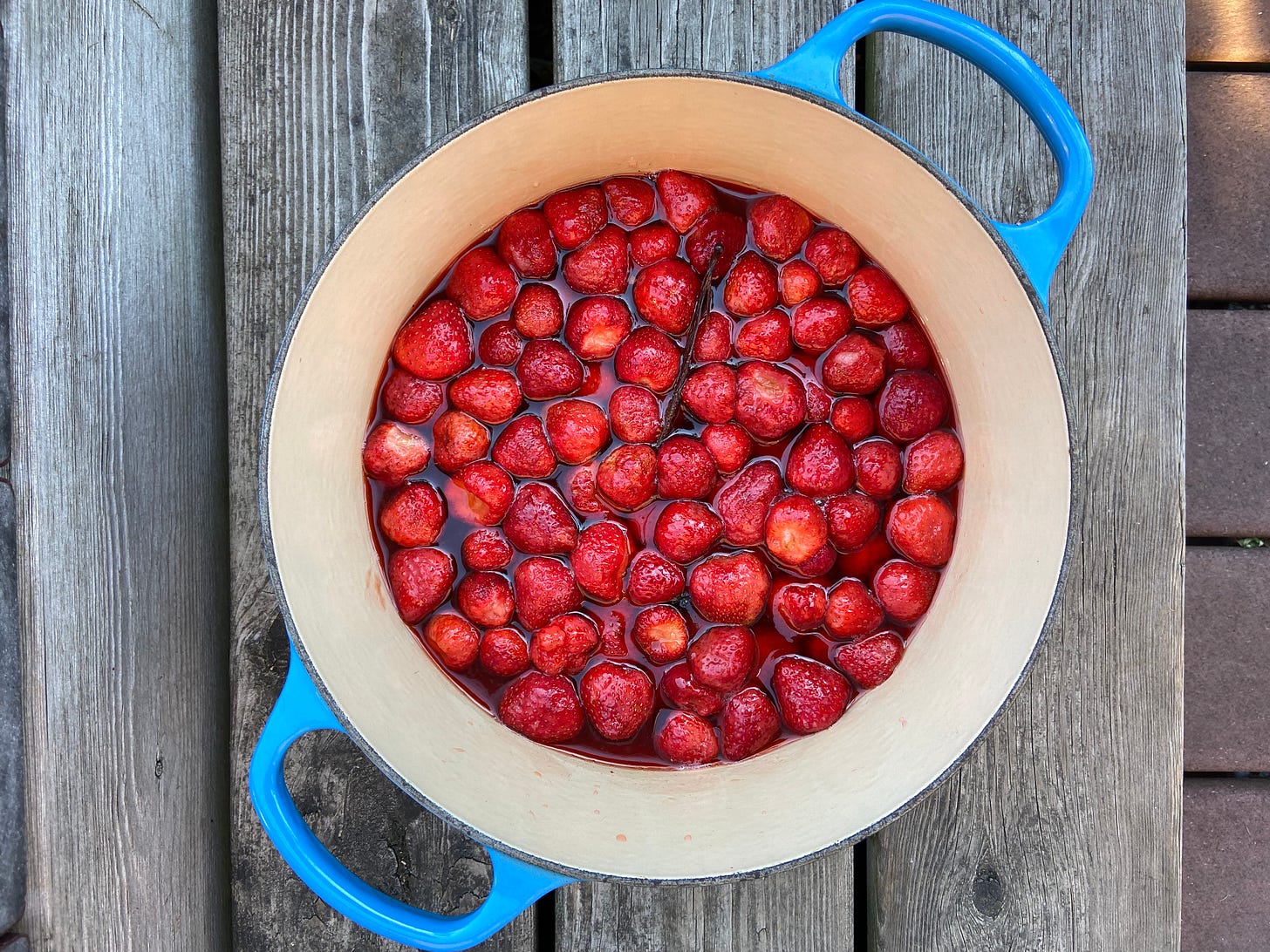
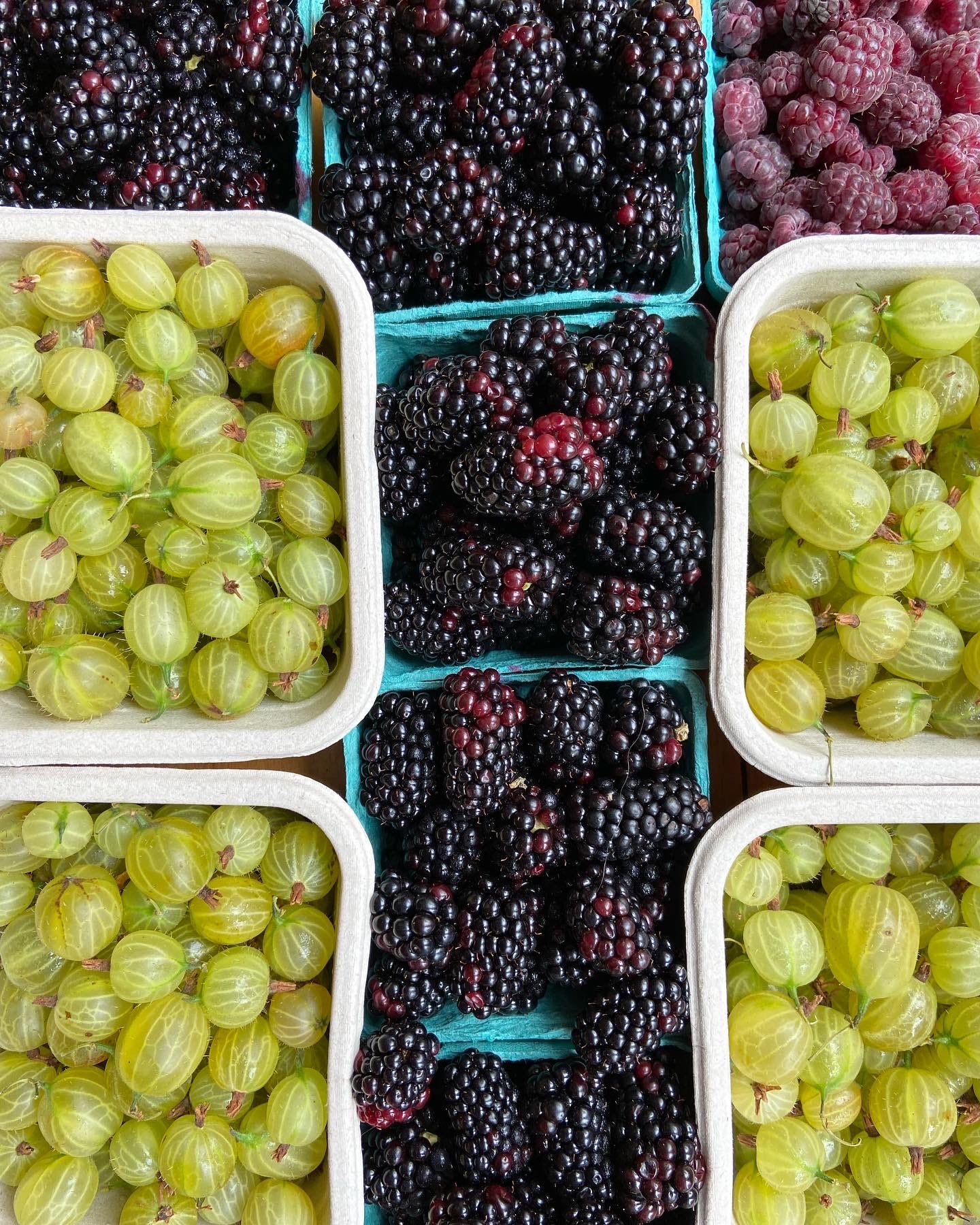
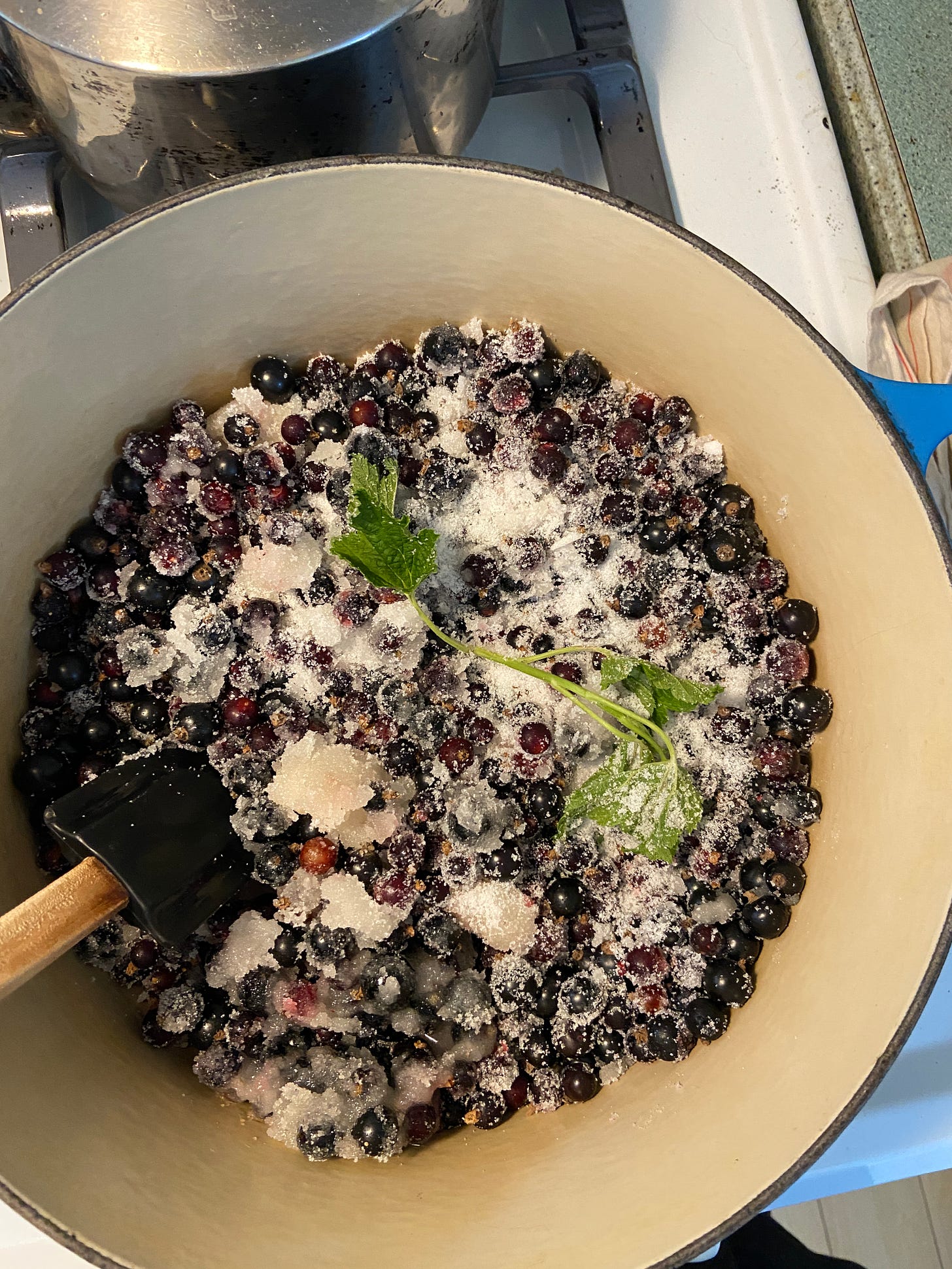
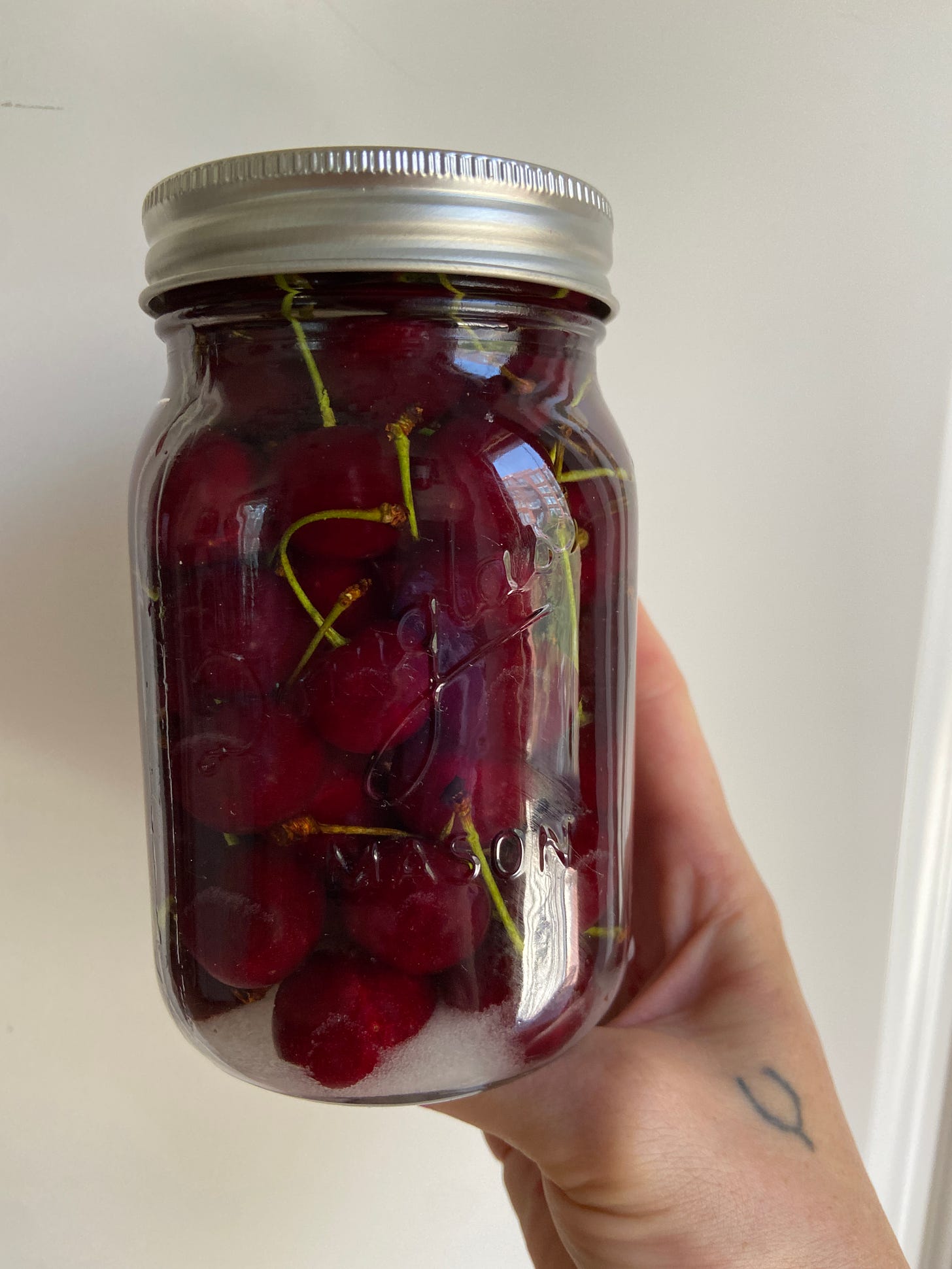
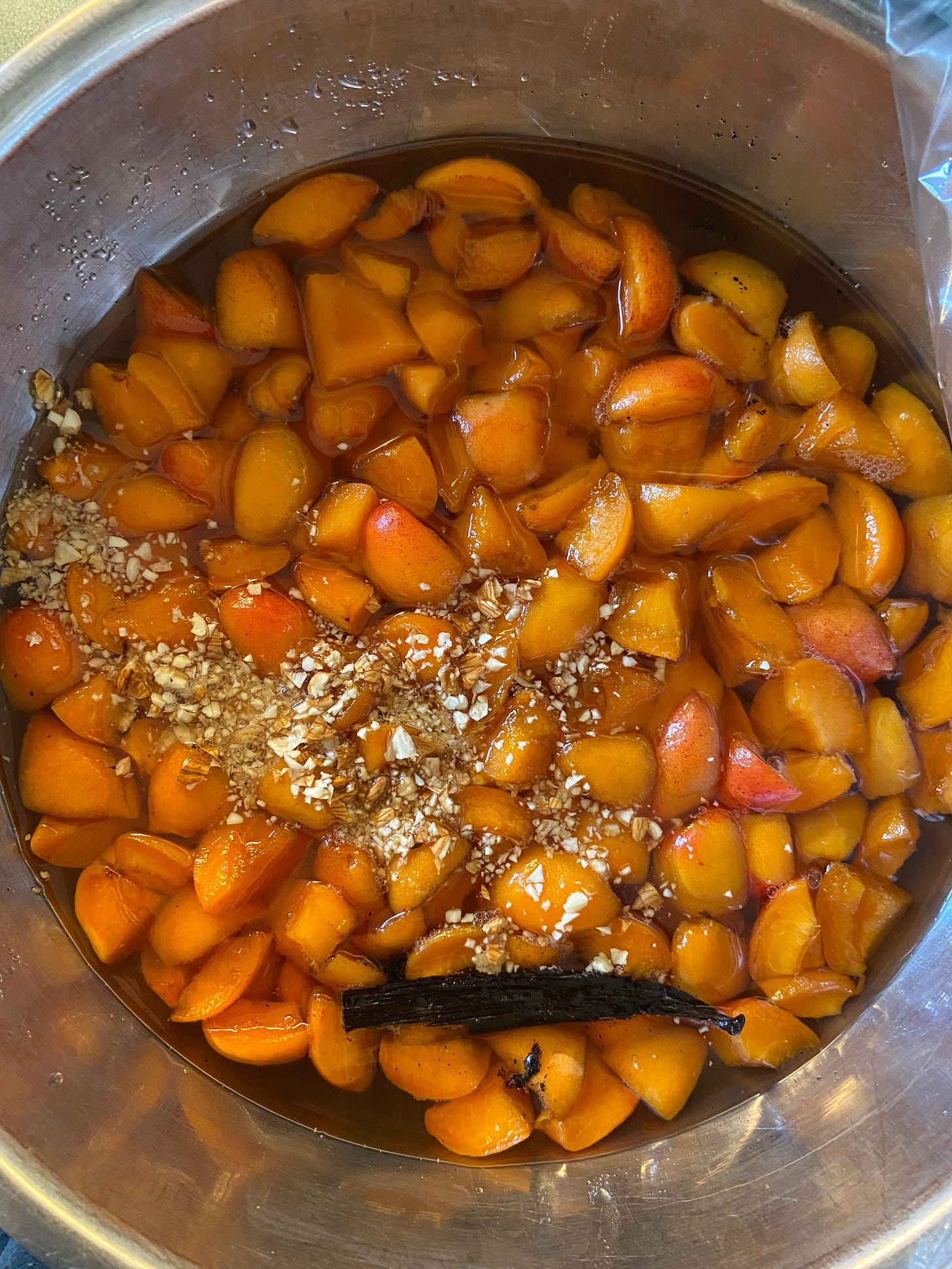
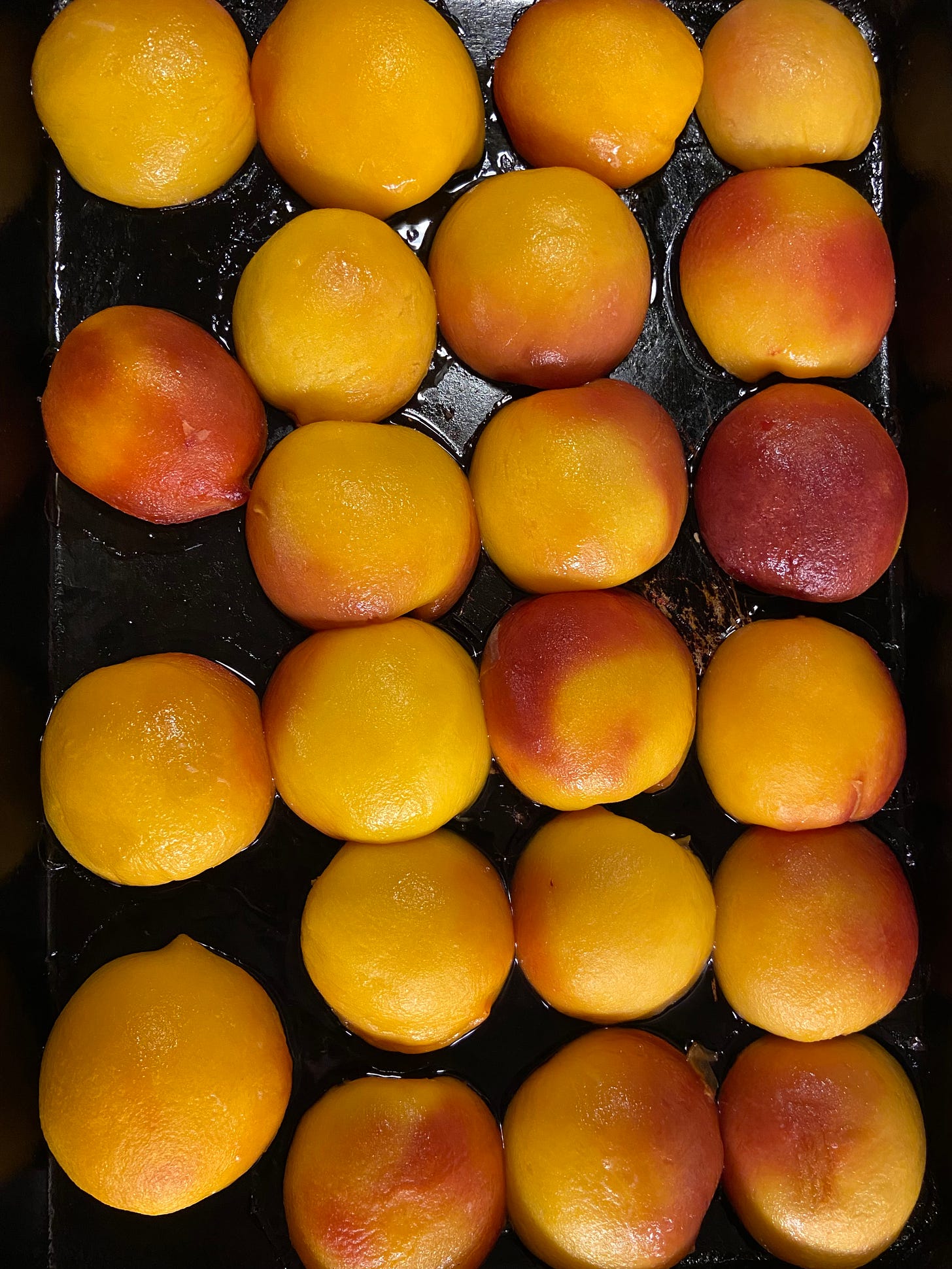
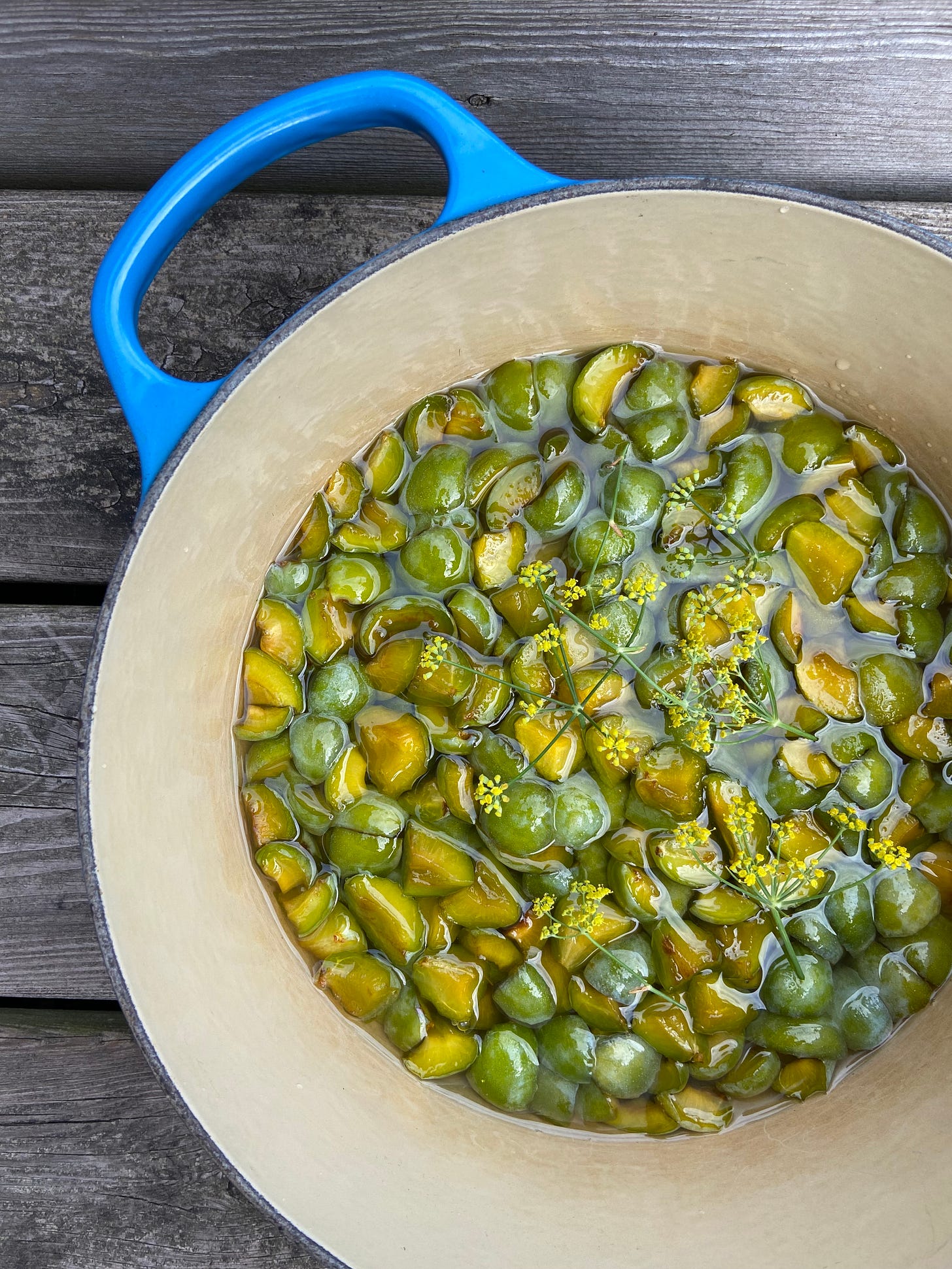
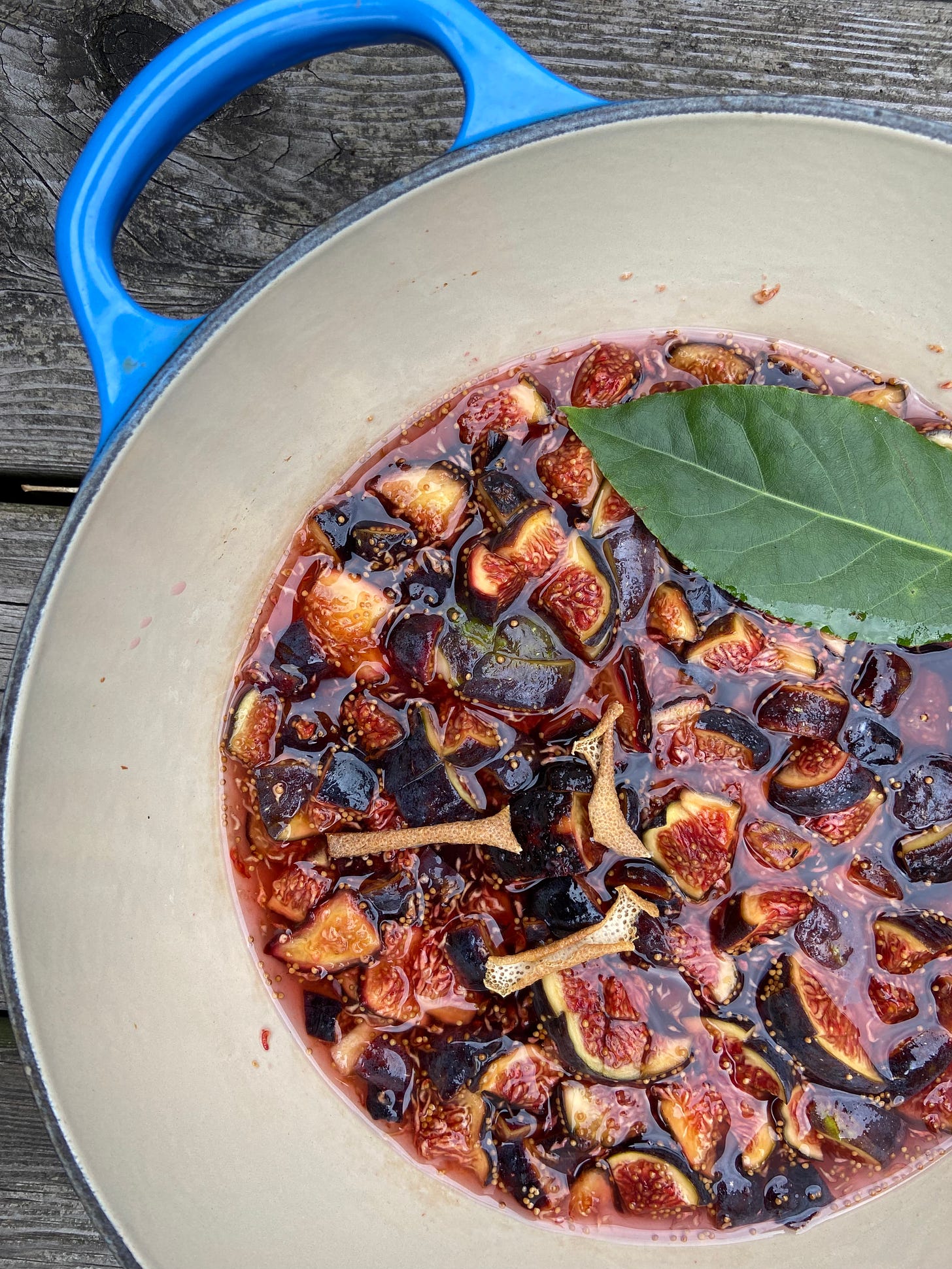
I can’t stop thinking about dried melon jerky! 🍈
Outstanding info for both novice, and pros!! Inspiring!! Now, to find local orchards and farms with ripe fruit!